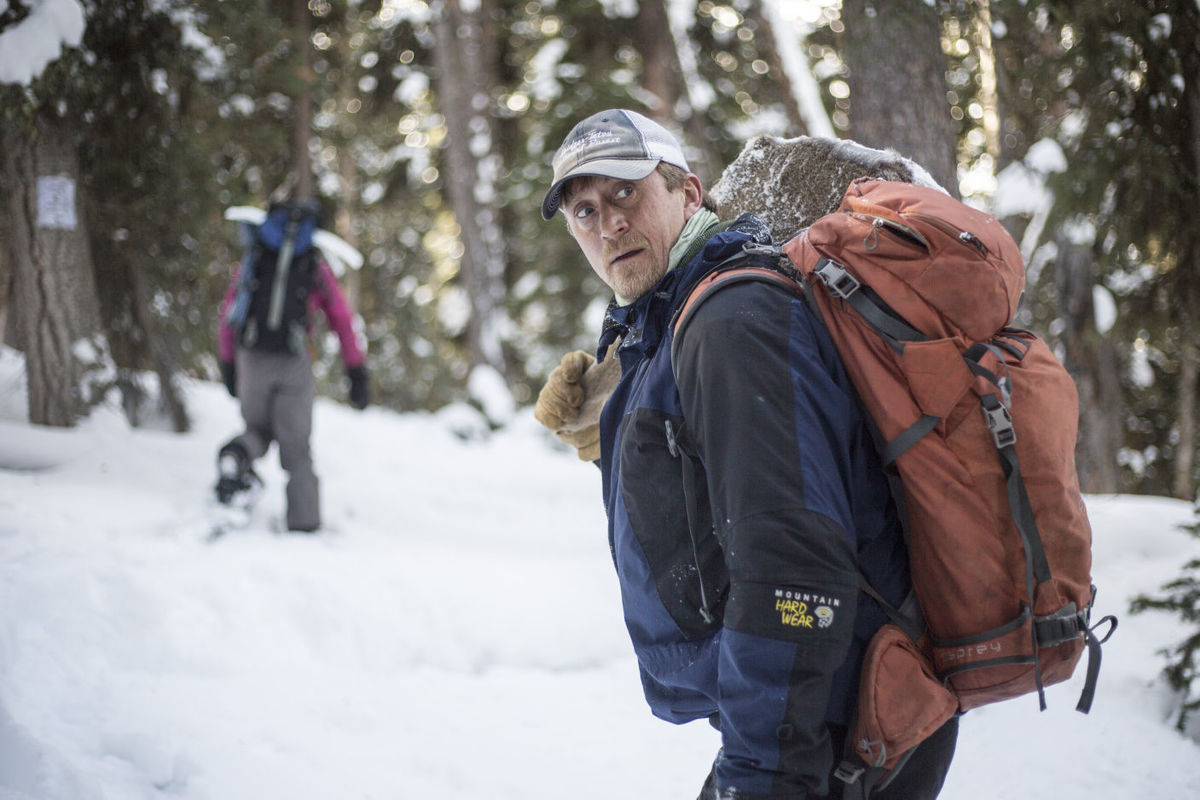Feds Prepare to Delist Region’s Missing Lynx
 Jason Wilmot and Sarah Hegg snowshoe into a carnivore bait station in 2016 on the Bridger-Teton National Forest near Togwotee Pass. Wilmot led a survey searching for lynx on over 2.5 million acres in northwestern Wyoming, from Kemmerer to the Absaroka Range near Dubois.
Jason Wilmot and Sarah Hegg snowshoe into a carnivore bait station in 2016 on the Bridger-Teton National Forest near Togwotee Pass. Wilmot led a survey searching for lynx on over 2.5 million acres in northwestern Wyoming, from Kemmerer to the Absaroka Range near Dubois.
RYAN DORGAN/Jackson Hole Daily FILE
The Equality State’s best lynx habitat may no longer hold any of the big-footed wildcats.
Nevertheless, the species’ days of being protected by the federal government appear to be waning.
An exhaustive search of the Bridger-Teton and Shoshone national forests and Grand Teton National Park turned up no conclusive evidence that lynx still exist in the region. Bridger-Teton biologist Jason Wilmot headed the project, spending three winters consumed by the 2.5 million-acre survey.
Baited camera traps, hair snares and track surveys were the foundation of the search, which spanned from near Kemmerer to the Absaroka Range north of Dubois. The project was designed to have a 90 percent chance of finding lynx.
As recently as the early 1970s Wyoming’s Canada lynx were common enough that trappers managed to legally catch 18 of the midsize felines from a small area in the Wyoming Range over a two-year period. Since then they have become evermore rare. The last time a lynx was confirmed on the Bridger-Teton National Forest was in 2010.
Wilmot’s search wrapped up last spring, and he’s still in the process of finalizing a report summarizing the lack of findings.
The U.S. Fish and Wildlife Service, in the meantime, is also preparing to release its own documentation on lynx — a proposed rule that would delist lynx as a “threatened” under the Endangered Species Act.
“We feel confident that lynx do not warrant listing as endangered or threatened, even given the situation in the Greater Yellowstone area,” said Jodi Bush, who leads Fish and Wildlife’s Montana Ecological Services office.
The listing of lynx as a federally protected “threatened” species, which dates to 2000, was due to the “potential for inadequate regulatory mechanisms,” Bush said. Since then federal land managers have taken steps to protect lynx habitat, which exists predominantly on U.S. Forest Service property. Other threats that could imperil lynx, their prey or their habitat do not rise to a level that warrants a threatened listing, she said.
A fall 2017 species status assessment that is a precursor to a delisting rule paints a grim picture of the Greater Yellowstone’s lynx.
The population, which is isolated from a more stable cluster of lynx in northwest Montana, is deemed to have a 52 percent “probability of persistence” by 2025. By 2050 the chance of existence falls to 35 percent, and it’s just 15 percent by the turn of the century.
The entire population of lynx south of the Canadian border is managed as a “distinct population segment” that’s jointly managed as threatened.
Bush was unsure if Fish and Wildlife would delist the species as a whole or cut it up and continue to protect the more vulnerable populations — like the Yellowstone region’s lynx.
“It would depend on how we delist the species,” Bush said. “Since we haven’t started to develop that proposal at this time, I can’t really answer that.”
There are two swaths of lynx habitat south of Canada — in Maine and Colorado — that have populations that appear to be thriving, Bush said. Lynx populations in northwestern Montana and northeastern Minnesota are thought to be stable, she said, but those in the Greater Yellowstone and Washington state aren’t doing as hot.
A 2016 U.S. Forest Service report that summarizes the distribution, status and threats to lynx in Montana and Wyoming says that the limited data that exists suggest the Equality State’s population contracted or failed in approximately 2010. Risks to the population, author John Squires wrote, include fire impacts, habitat fragmentation, and oil and gas development in the Wyoming Range, once a lynx stronghold. Togwotee Pass and the eastern shore of Yellowstone Lake were also considered once-stellar lynx habitat.
Wilmot’s hunch is that northwest Wyoming’s pine forests could still support lynx. There’s deep snow and plenty of downed trees, he said, which provide cover and food for snowshoe hares, the staple of the lynx’s diet.
“The thing about the B-T is we don’t have a lack of good habitat,” Wilmot said. “That’s not the limiting factor. And it’s probably not a lack of food, but I don’t know that.”
Land management plans and policies are in place to protect that habitat into the future, Wilmot said. When a Bridger-Teton forest thinning project was going through the planning phases, for example, there are “screens and mitigations” that safeguard qualities lynx depends on, he said.
“At this point, we don’t know why we don’t have lynx,” Wilmot said. “It’s certainly not due to lack of quality management.
“We’ve been managing for lynx habitat for a long time,” he said. “It’d be nice to know that it supported a lynx.”
Contact Mike Koshmrl at 732-7067, env@jhnewsandguide.com or @JHNGenviro.


